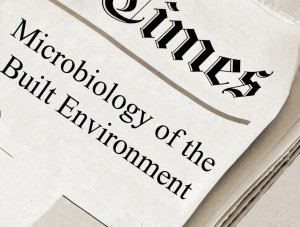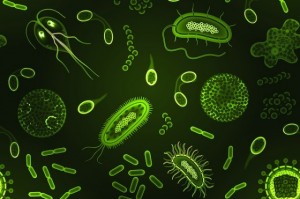You know sometimes you use a working title for something for long enough that it becomes the title? Like “Snakes on a Plane”. That’s what happened in this case, we also meant to come up with a name for this class… never did and so the official name at the registrar is “Koala Poop”. Awesome. …
We’re recruiting a student/postdoc for this project! If it sounds interesting, please contact the Huttenhower Lab! We were happy to hear that we’ve been funded by the Sloan Foundation to continue our study of microbes on the Boston subway. Our original study involved 1) identifying which microbes were resident in this built environment, 2) understanding …
We received the announcement today that the MoBE 2017 Symposium, chaired by Lynn Schriml at the University of Maryland School of Medicine, Institute for Genome Sciences, has been funded by the Alfred P. Sloan Foundation’s program in the Microbiology of the Built Environment. MoBE 2017 will be co-sponsored by and held at the National Academy …
Studying the 5 second rule, antibiotic resistance genes in indoor dust and sewers, Legionella in the air, and water treatment. Microbes on the floor Longer Contact Times Increase Cross-Contamination of Enterobacter aerogenes from Surfaces to Food — Robyn C. Miranda — Applied and Environmental Microbiology ($25 for 1 day) Bacterial cross-contamination from surfaces to food can …
Got pointed to this by a few people and it seems worth checking out http://blogs.fco.gov.uk/patriciagruver/2016/08/31/funding-microbiome-partnership-development-awards-open-call-for-submissions/ Announcement copied below: FUNDING: Microbiome Partnership Development Awards: Open Call for Submissions The UK-US Partnership Development Awards Programme aims to develop new relationships in the field of microbiome research, leading to longâ€term research collaborations. Applications for the current round are …
Microbes found in ambulances Not surprisingly, bacteria could be detected after swabbing surfaces in ambulances. Detection and characterization of surface microbial contamination in emergency ambulances – Aketza Varona-Barquin – American Journal of Infection Control ($35.95) A cross-sectional study was performed in 10 emergency basic life support ambulances operating in Bilbao, Spain, to assess surface bacterial …
In light of the Cold Fire that started yesterday evening in the central valley of California, I started to wonder, ‘what happens to microbes?!’ I found myself in a literature click hole of fantastic papers that studied how fire impacted soil microbial communities in several different ecosystems. What surprised me most is how fast researchers …
You’ve probably heard that the ocean is full of plastic. Here is a guest post about a current crowdfunding campaign to explore the microbes that colonize plastic. Professor Ana Maria Barral from National University (http://www.nu.edu/), a private non-profit in California has launched a crowdfunding campaign to support a recently started project to explore the microbes …
Microbes and the built environment sensu stricto This short review in Trends in Microbiology is open access, very relevant for this blog, and received quite some press. Review: Buildings, Beneficial Microbes, and Health – Jordan Peccia, Sarah E. Kwan – Trends in Microbiology (OA) Bacteria and fungi in buildings exert an influence on the human …
A few weeks ago we wrapped up Spring Quarter here at UC Davis and the end of our experimental “Swabs to Genomes” class, taught as a freshman seminar. As we introduced here, the idea was to take a set of students from colonies on a plate (from a swab) through a collection of ready to …

